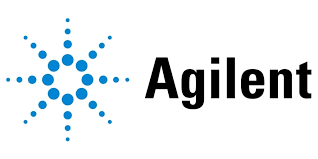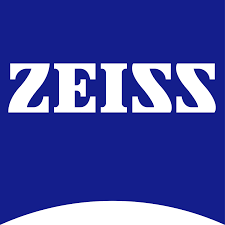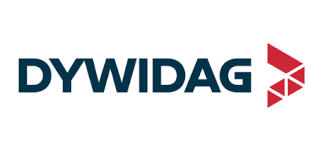Minimalist Interior Design Trends
Published Date: 15 December 2025 | Report Code: minimalist-interior-design-trends
Minimalist Interior Design Trends Market Size, Share, Industry Trends and Forecast to 2033
This comprehensive report explores the evolution and dynamics of the Minimalist Interior Design Trends market, providing key insights, detailed segmentation, regional analysis, and forecasts for the period 2024 to 2033. It integrates market size data, growth rates, and driver influences to offer stakeholders a multidimensional perspective on design trends and future industry developments.
| Metric | Value |
|---|---|
| Study Period | 2024 - 2033 |
| 2024 Market Size | $3.80 Billion |
| CAGR (2024-2033) | 6.3% |
| 2033 Market Size | $6.68 Billion |
| Top Companies | Ikea, Muji, Herman Miller, Cassina |
| Last Modified Date | 15 December 2025 |
Minimalist Interior Design Trends (2024 - 2033)
Minimalist Interior Design Trends Market Overview
Customize Minimalist Interior Design Trends market research report
- ✔ Get in-depth analysis of Minimalist Interior Design Trends market size, growth, and forecasts.
- ✔ Understand Minimalist Interior Design Trends's regional dynamics and industry-specific trends.
- ✔ Identify potential applications, end-user demand, and growth segments in Minimalist Interior Design Trends
What is the Market Size & CAGR of Minimalist Interior Design Trends market in 2024?
Minimalist Interior Design Trends Industry Analysis
Minimalist Interior Design Trends Market Segmentation and Scope
Tell us your focus area and get a customized research report.
Minimalist Interior Design Trends Market Analysis Report by Region
Europe Minimalist Interior Design Trends:
Europe has traditionally been a leader in interior design innovation, and minimalist trends are no exception. The market is projected to expand from 1.06 units in 2024 to 1.87 units in 2033. European design is known for its balance between form and function, integrating sustainable practices with aesthetically pleasing minimalism. The mature market is supported by stringent environmental regulations and a strong cultural affinity for design simplicity.Asia Pacific Minimalist Interior Design Trends:
In Asia Pacific, rapid economic growth and the modernization of urban spaces have boosted demand for minimalist interior designs. With emerging trends in digitalization and sustainability, the region is witnessing a shift towards eco-friendly, streamlined living environments. Forecasts indicate a market expansion from 0.72 units in 2024 to 1.27 units in 2033, driven by increased consumer consciousness and investments in smart home technologies.North America Minimalist Interior Design Trends:
North America remains a significant market for minimalist interior design trends, propelled by technological innovation and a strong real estate sector. With a forecast growth from 1.44 units in 2024 to 2.53 units in 2033, the market benefits from high consumer awareness and a steady demand for contemporary and tech-integrated design solutions. Investments in energy-efficient and smart home systems further enhance market potential.South America Minimalist Interior Design Trends:
South America demonstrates promising potential with a growing middle class and an appetite for modern living standards. The region’s market is projected to grow from 0.34 units in 2024 to 0.59 units in 2033. Urban renewal projects and the influence of global design trends are encouraging local designers and manufacturers to adopt minimalist approaches that emphasize clean lines and functionality.Middle East & Africa Minimalist Interior Design Trends:
The Middle East and Africa region is slowly emerging in the minimalist design landscape. Forecasts estimate an increase in market adoption from 0.24 units in 2024 to 0.41 units in 2033. Rapid urban development, coupled with a growing influence of global architectural trends, is encouraging designers to incorporate minimalist principles. Advancements in technology and a shift towards sustainable living are contributing factors to the gradual market traction in this region.Tell us your focus area and get a customized research report.
Minimalist Interior Design Trends Market Analysis By Design Element
Global Minimalist Interior Design Trends, By Design Element Market Analysis (2024 - 2033)
Analysis by design elements focuses on components such as color schemes, decor, and textures, which define the visual appeal and tactile experience of minimalist interiors. In this segment, color schemes are meticulously curated to evoke calm and balance, often employing neutral shades and soft accents to create a soothing environment. Decor in minimalist spaces is streamlined to include only essential elements that enhance functionality without overwhelming the space. Meanwhile, textures play a critical role in adding depth and contrast, ensuring that even the simplest designs are visually engaging. By leveraging these elements, manufacturers and interior designers are able to offer products that meet the dual objectives of style and efficiency. The insights drawn from this analysis assist market participants in refining their offerings to align with evolving consumer taste and design sophistication.
Minimalist Interior Design Trends Market Analysis By Room Type
Global Minimalist Interior Design Trends, By Room Type Market Analysis (2024 - 2033)
When analyzed by room type, the market reveals distinct performance patterns across various interior spaces such as living rooms, bedrooms, kitchens, bathrooms, home offices, and furniture. The living room segment, for instance, is a flagship area with the largest market share, driven by evolving lifestyle preferences that prioritize open, uncluttered spaces. Bedrooms continue to offer considerable growth potential as homeowners seek comfort combined with modern aesthetics. Kitchens and bathrooms are undergoing significant transformations to integrate smart storage solutions and energy-efficient fittings. The home office has seen an upsurge in demand, fueled by the transition to remote working environments and an increased focus on ergonomic design. Meanwhile, furniture not only serves a functional purpose but also reinforces the visual narrative of minimalism by offering multi-functional, versatile pieces that are both aesthetically appealing and practical.
Minimalist Interior Design Trends Market Analysis By Design Principles
Global Minimalist Interior Design Trends, By Design Principles Market Analysis (2024 - 2033)
The segment dedicated to design principles such as functionalism, open space concepts, simplicity, and invisible design highlights the core philosophies driving the market. Functionalism and the open space concept emphasize maximizing usability and ensuring each element serves a purpose, thereby minimizing unnecessary clutter. The principle of simplicity focuses on stripping away the superfluous to reveal pure, essential forms, while invisible design underscores the importance of subtlety and understated elegance. These principles not only respond to practical needs but also resonate with consumers’ desires for aesthetic clarity. As a result, companies are increasingly aligning their product development and marketing strategies with these guiding principles, reinforcing brand identity and establishing a competitive edge in an increasingly saturated market.
Minimalist Interior Design Trends Market Analysis By Technology Integration
Global Minimalist Interior Design Trends, By Technology Integration Market Analysis (2024 - 2033)
Technology integration has emerged as a transformative force in the minimalist interior design market. The adoption of smart home solutions, energy-efficient systems, and automated lighting reflects the modern consumer’s demand for convenience and sustainability. Smart home solutions facilitate seamless connectivity and remote control of home environments, contributing significantly to energy management and operational efficiency. Energy-efficient systems are integrated into design approaches to reduce power consumption and promote environmental consciousness, while automated lighting systems offer both functional and aesthetic benefits by adjusting to natural light patterns. This integration of technology not only enhances the user experience but also drives innovation across product development cycles, positioning technology as a critical catalyst for market growth in the coming years.
Minimalist Interior Design Trends Market Trends and Future Forecast
Tell us your focus area and get a customized research report.
Global Market Leaders and Top Companies in Minimalist Interior Design Trends Industry
Ikea:
Ikea is renowned for its commitment to minimalist design principles, offering affordable, stylish, and functional home furnishings. The company’s global footprint and innovative approach have consistently set industry standards, influencing design trends worldwide.Muji:
Muji has become synonymous with minimalism, focusing on the use of natural materials and simplistic designs that emphasize functionality. Their product lines span a range of home essentials that perfectly balance aesthetic appeal with practical use.Herman Miller:
Herman Miller specializes in modern office and home furniture designed with a minimalist ethos. Their focus on ergonomic design, innovative use of materials, and sustainability has solidified their standing as a leader in minimalist interior design.Cassina:
Cassina is celebrated for its high-end minimalist furniture designs that merge artisan craftsmanship with contemporary aesthetics. The company’s dedication to quality and innovative design elements has made it a prominent figure in the industry.We're grateful to work with incredible clients.









